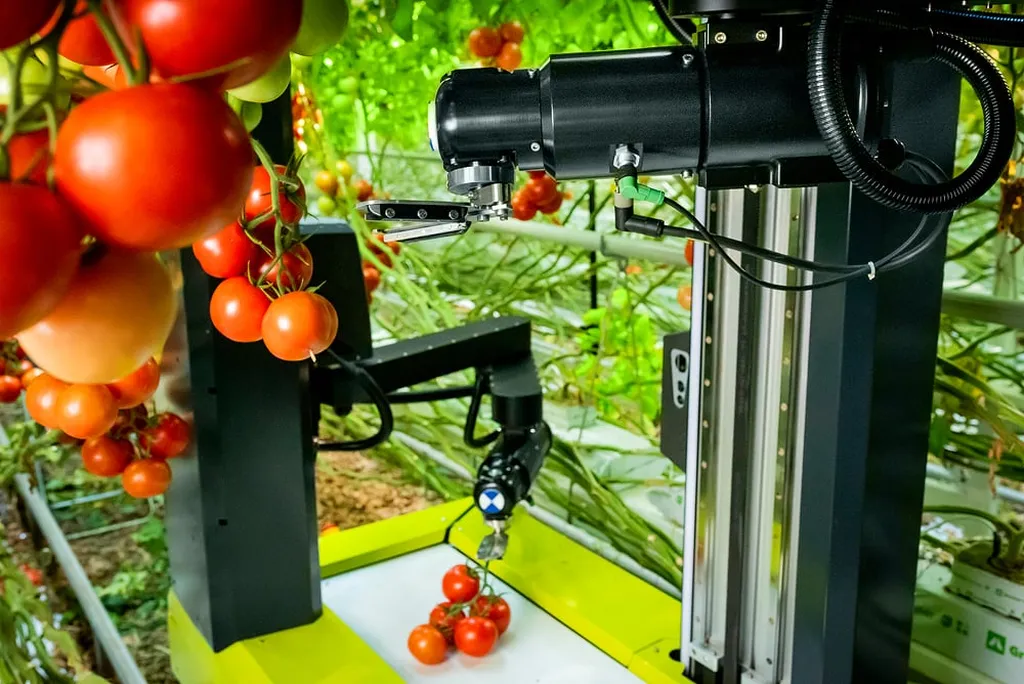In the ever-evolving landscape of agricultural technology, a groundbreaking study published in *Smart Agricultural Technology* is set to revolutionize the way we approach selective tomato harvesting. The research, led by Kai Wang from the School of Mechanical and Automation at Weifang University in China, introduces a novel combination of target recognition, localization, and picking sequence planning that could significantly enhance the efficiency and accuracy of tomato-picking robots in greenhouse environments.
The study addresses a critical challenge in the agricultural sector: the need for rapid and accurate perception and planning in complex environments. Traditional methods have often fallen short, limiting the practical deployment of robotic systems in agriculture. Wang and his team have developed a sophisticated solution that integrates a Ghost-CA-enhanced YOLOv5 model for target recognition and localization, coupled with a K-G picking sequence planner.
The Ghost-CA-enhanced YOLOv5 model is a significant improvement over existing approaches. By replacing the YOLOv5 backbone with four lightweight downsampling stages built from GhostConv and GhostBottleneck blocks, the researchers have reduced the model’s parameters while maintaining high accuracy. Additionally, Coordinate Attention (CA) modules are inserted after the multi-scale feature maps to improve detection under occlusion, and the EIoU loss is adopted for bounding-box regression to enhance localization precision.
“Our goal was to create a system that could operate efficiently in the complex and often occluded environments of greenhouses,” Wang explained. “The Ghost-CA-enhanced YOLOv5 model excels in detecting tomatoes even when they are partially hidden, which is a common challenge in such settings.”
For picking sequence planning, the researchers employed a K-means clustering algorithm to group the picking tasks and a Gaussian kernel to determine both the inter-cluster order and the within-cluster fruit sequence. This K-G method was found to yield the shortest traversal path compared to sequential strategies and Ant Colony Optimization (ACO), making it highly efficient for robotic operations.
The practical implications of this research are substantial. With an average detection accuracy of 95.12%, a detection speed of 25.41 FPS, and a model size of just 8.9 MB, the proposed system meets the operational requirements of tomato-picking robots. In continuous multi-target tests, the recognition, localization, and picking success rates reached 97.14%, 94.29%, and 91.43%, respectively, with an average picking time of approximately 6.7 seconds per tomato.
“This research represents a significant step forward in the development of agricultural robots,” Wang noted. “The high success rates and efficiency of our system demonstrate its potential for real-world applications, which could greatly benefit the agriculture sector.”
The commercial impact of this research is profound. As the demand for automation in agriculture continues to grow, the need for efficient and accurate robotic systems becomes increasingly critical. The integration of the Ghost-CA-enhanced YOLOv5 model and the K-G picking sequence planner offers a robust solution that can enhance productivity and reduce labor costs in greenhouse environments.
Looking ahead, this research could shape future developments in the field of agricultural robotics. The successful implementation of such advanced systems could pave the way for broader adoption of robotic technologies in various agricultural applications, ultimately contributing to more sustainable and efficient farming practices.
As the agriculture sector continues to embrace technological advancements, the work of Kai Wang and his team serves as a beacon of innovation, highlighting the transformative potential of agritech in addressing the challenges of modern farming.

